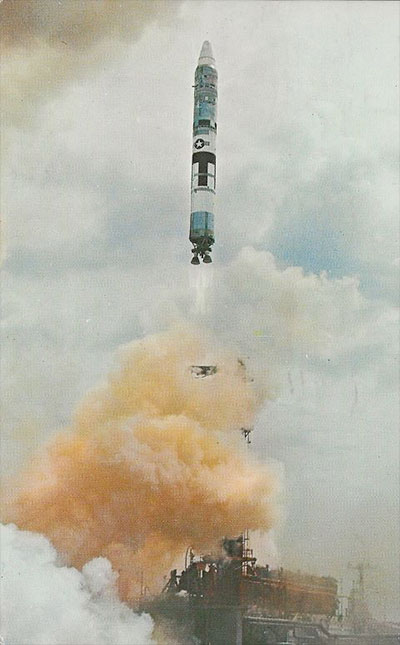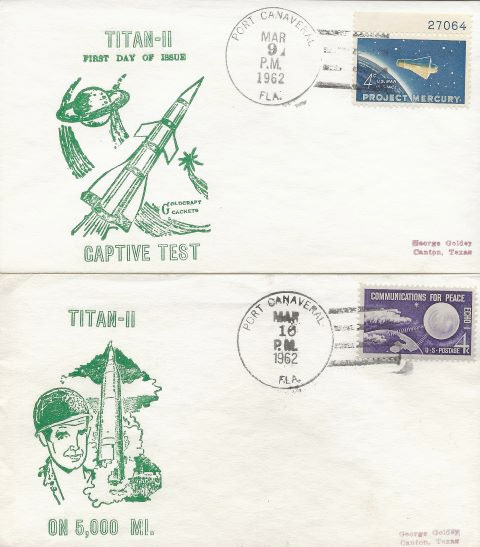Space Cover 639: Titan II at 60Sixty years ago next month, the Air Force's Titan II missile first flew. The cover at top is a Goldcraft Cachet postmarked at Port Canaveral on March 9, 1962 when the first Titan II was static fired at Pad 16 at Cape Canaveral. And then a week later (bottom cover) it was launched, successfully delivering its payload into the target area 5000 miles away.
The Titan II was a (heavily) modified upgrade to the Air Force's Titan 1 ICBM. Where the Titan 1 was fueled by liquid oxygen and kerosene, requiring an intricate fueling process right before launch, the Titan II was fueled by storable propellants (nitrogen tetroxide and hydrazine), allowing it to stay fueled and ready to launch at any time.
After the first flight (above), 32 more test flights were performed on the Titan II to qualify it for both the ICBM role and to launch the Gemini spacecraft. The first 20 of these flights had a checkered history as equipment problems and "pogo" (think of it as a serious vibration – like driving over many sets of railroad tracks at high speeds) issues had to be solved. Pogo wasn't an issue for the Titan's ICBM role where the payload was a warhead, but pogo had to be tamed to allow people to come through the Gemini booster ride without injury. The 33rd and final Titan II ICBM test flight occurred on April 9, 1964, one day after NASA launched Gemini 1 in an uncrewed test of the Gemini-Titan configuration.
The Titan II went on to successfully launch 10 Gemini crews into space. And a number of the retired ICBM's went on to launch robotic missions in the 1980's and '90's. Specially modified versions of the Titan II were used as the core stages for the Titan III and IV boosters, successfully launching a number of robotic missions including both Vikings, both Voyagers, Helios-2, and Cassini. And Titan III's would have been used for the stillborn Dyna-Soar and MOL crewed programs. The last Titan flew on a classified mission on October 19, 2005.

The launch of the first Titan II is shown above on Plastichrome postcard P49177.













